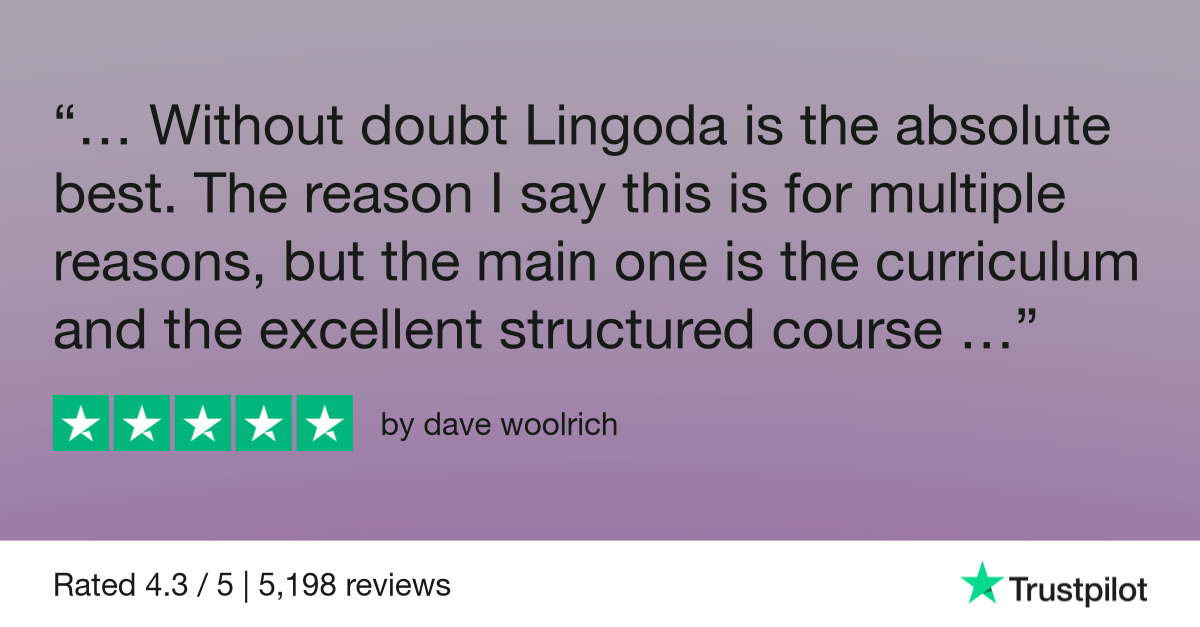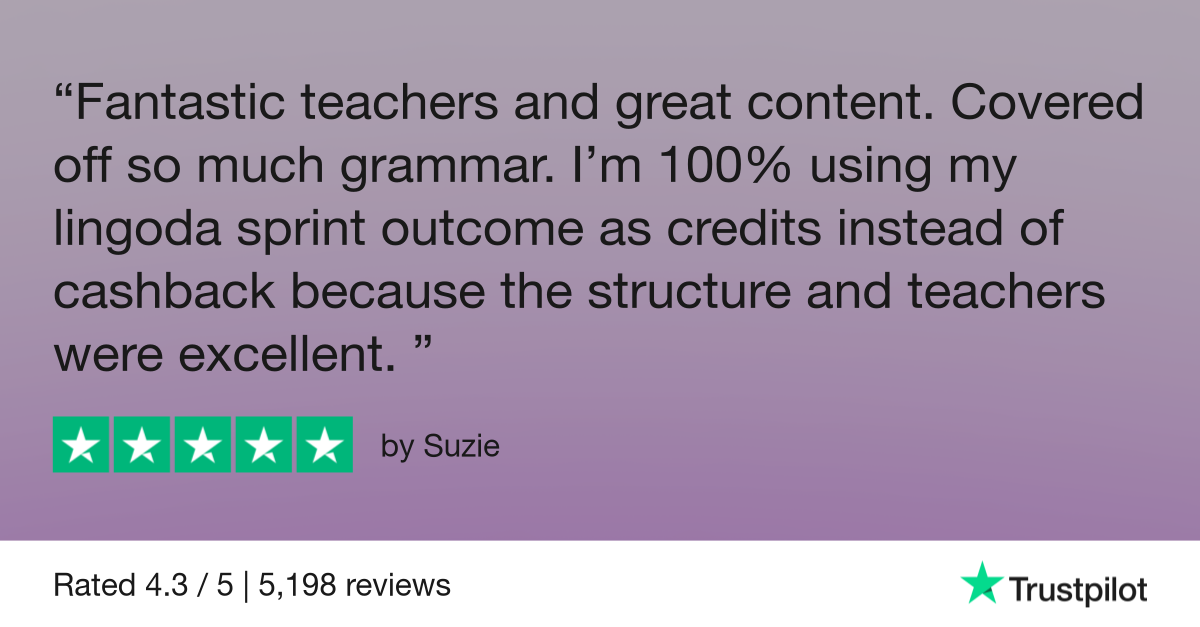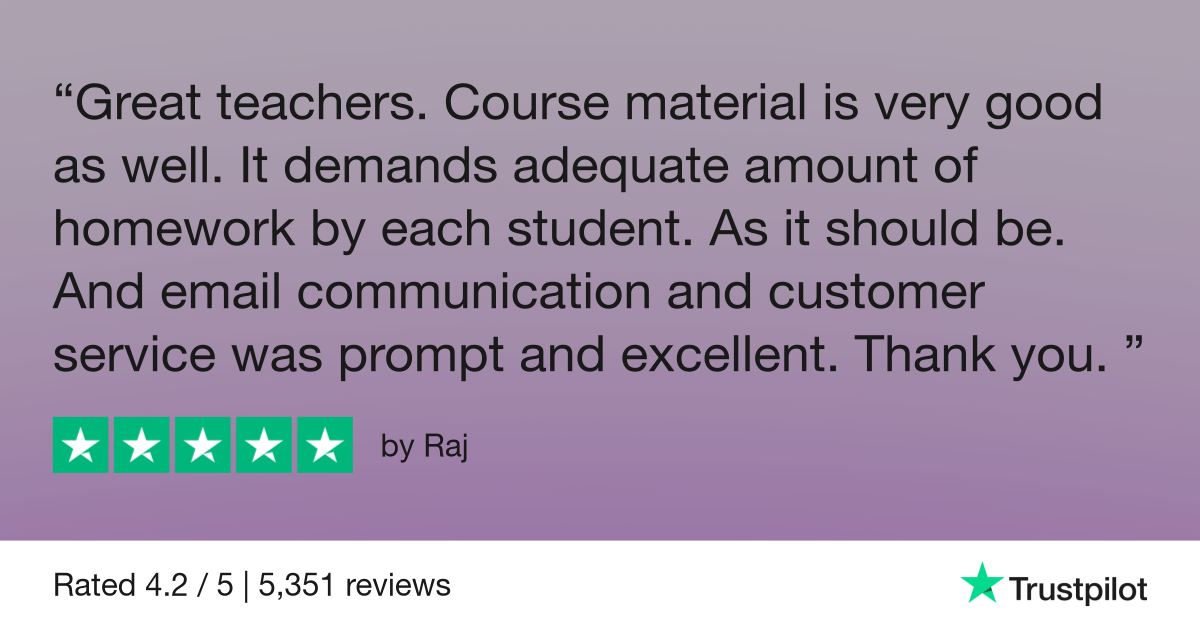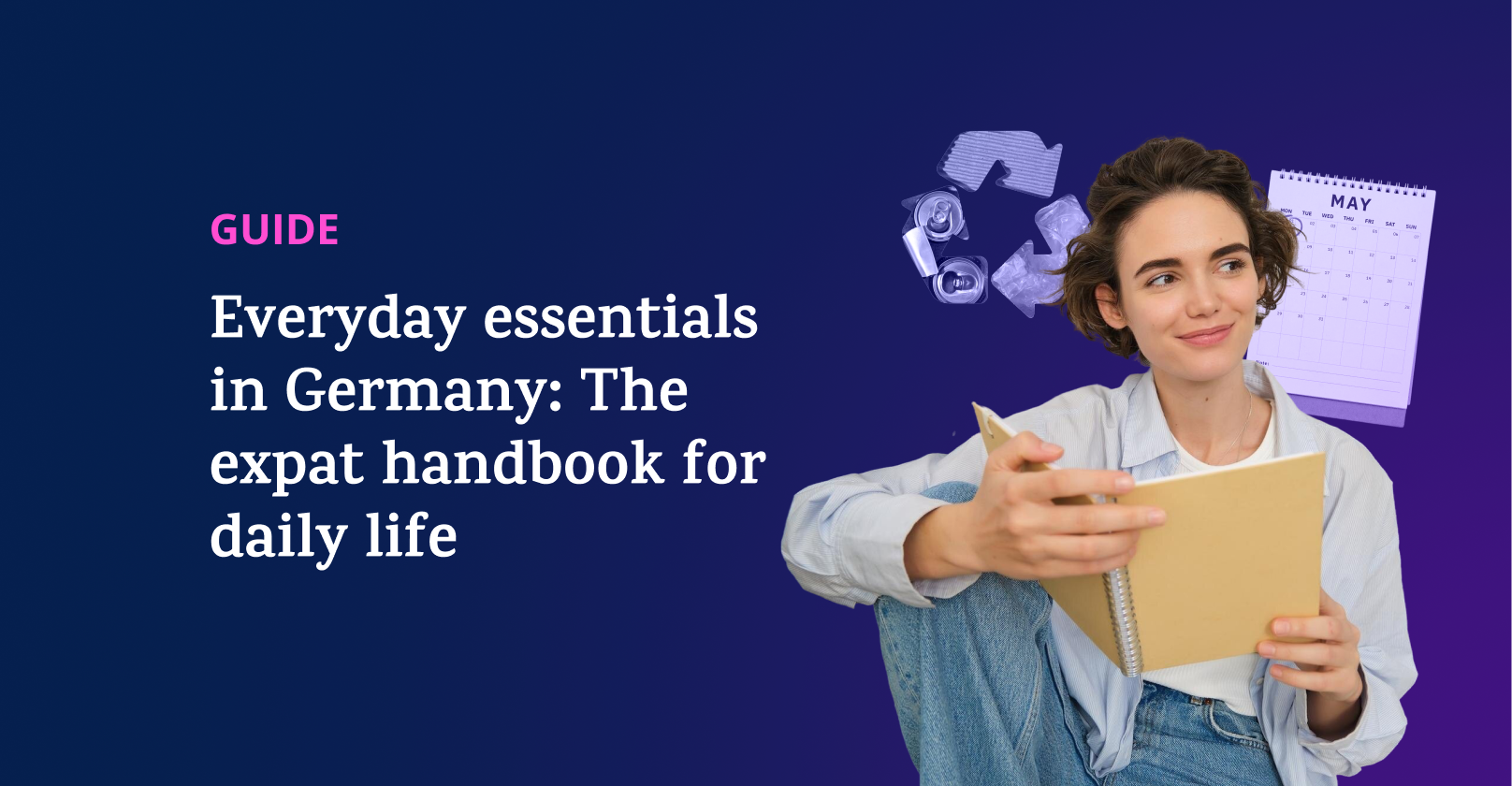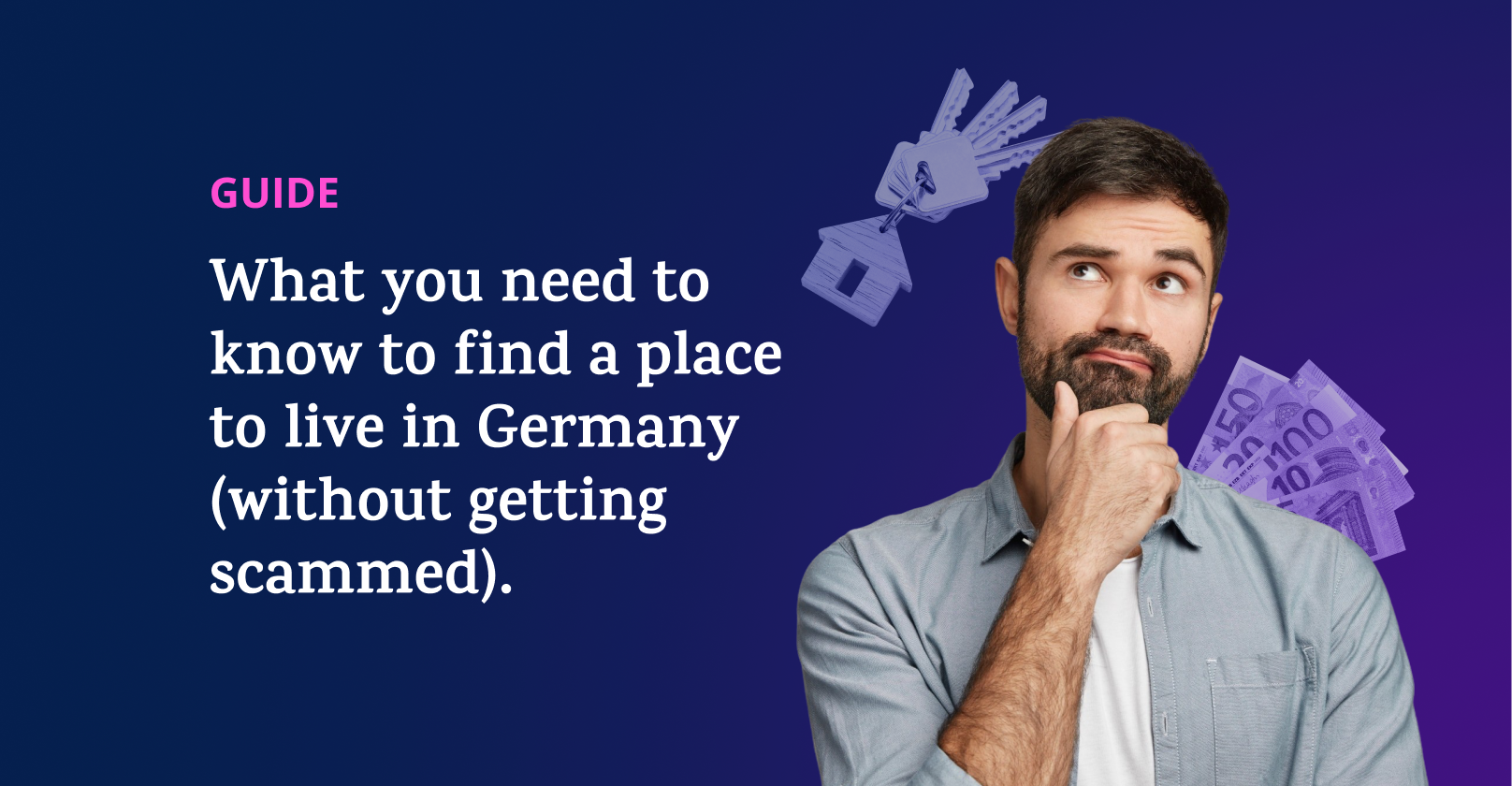The German A1 syllabus: Your complete beginner’s roadmap
The German A1 syllabus includes everything you need to learn to achieve beginner-level proficiency in German. It covers the essential grammar, vocabulary and communication skills for everyday situations — from greetings and introductions to talking about work, travel and daily routines.

In the following guide, we’ve compiled a clear, structured German A1 syllabus. It’s a great place to start if you’ve decided to move to Germany, or if you’re already living in the country and want to make new friends and improve your job prospects. It’ll give you an overview of the core A1-level skills and goals, organized by module, along with tips and strategies to help you successfully master the beginner level.
- What is German A1 (CEFR)? Beginner level explained
- Why a clear A1 syllabus matters
- German A1 syllabus overview: Core skills and goals
- Detailed German A1 syllabus breakdown (module by module)
- How long does it take to learn German A1?
- Tips and strategies to master A1
- Best resources and tools for German A1
- German A1 exam format and requirements
- FAQs
What is German A1 (CEFR)? Beginner level explained
German A1 is the first level of the Common European Framework of Reference for Languages (CEFR) and shows you can manage basic everyday communication. The CEFR framework consists of six German language levels, from A1 to C2:
- A1 (beginner): Can understand and use familiar everyday expressions and basic German phrases.
- A2 (elementary): Can understand sentences and frequently used expressions related to areas of immediate relevance and communicate in simple and routine tasks.
- B1 (intermediate): Can understand the main points of clear standard input on familiar topics, handle most situations while traveling and produce simple connected text.
- B2 (upper intermediate): Can understand the main ideas of complex texts on both concrete and abstract topics.
- C1 (advanced): Can understand a wide range of demanding, longer texts and express ideas fluently and spontaneously.
- C2 (proficient): Can understand with ease virtually everything heard or read and express oneself fluently and precisely.
Reaching the A1 level means you can introduce yourself, ask and answer simple questions, and interact in a straightforward way. It differs from A2, where you can already describe your past, environment and everyday needs in simple terms.
Let’s take a closer look at the main differences between these two levels:
| Skill area | A1 (beginner) | A2 (elementary) |
| Listening | Understands slow and clear speech on familiar topics | Understands simple conversations and texts |
| Reading | Recognizes simple words and short texts | Understands everyday texts and basic information |
| Speaking | Talks about familiar topics | Handles routine conversations |
| Writing | Produces short, simple texts | Writes notes and brief descriptions |
| Vocabulary | Basic words and phrases | Broader and related to areas of immediate relevance |
| Grammar | Focus on present tense | Introduces past and future tenses, connectors, and modal verbs |

Learn German with Lingoda
How it works

Why a clear A1 syllabus matters
A clear German A1 syllabus gives learners structure, prevents knowledge gaps and ensures alignment with CEFR exams. It breaks complex skills into manageable steps, introducing new material in a logical sequence and at a steady pace.
Many learners often get stuck at the beginner level — not because they lack effort, but because they lack structure. Without a clear plan, it’s tempting to revisit the same topics repeatedly and focus on what feels comfortable. It’s also difficult to measure progress.
A well-designed A1 syllabus keeps learning organized and consistent. For example, if you’d like to learn German online, Lingoda’s courses offer a clear, CEFR-aligned roadmap that guides learners step by step through each level at the right pace, integrating exam preparation naturally.
German A1 syllabus overview: Core skills and goals
The German A1 syllabus focuses on developing four core skills: listening, speaking, reading and writing. These are supported by grammar and vocabulary, with the goal of building a solid foundation for basic communication.
The table below shows the A1 learning goals for each skill area.
| Skill area | A1 learning goals |
| Listening | Learners can recognize familiar words and very basic phrases about themselves, their family and immediate surroundings when people speak slowly and clearly. |
| Reading | Learners can understand familiar names, words and very simple sentences; for example, on notices or in catalogs. |
| Speaking | Learners can interact in a simple way if the other person is prepared to repeat or rephrase things slowly and help them express themselves. They can ask and answer simple questions on familiar topics and use basic phrases to describe where they live and the people they know. |
| Writing | Learners can write short, simple texts, such as a holiday postcard. They can fill in forms with personal details; for example, entering their name, nationality and address on a hotel registration form. |
| Vocabulary | Learners have a basic repertoire of isolated words and phrases related to everyday situations. |
| Grammar | Learners can use a few simple grammatical structures and sentence patterns with limited control. |
Detailed German A1 syllabus breakdown (module by module)
Module 1: Introductions and personal information
Start your German journey by learning how to introduce yourself and ask basic questions.
- Vocabulary: names, age, nationality
- Grammar: the verb sein, pronouns, W-questions (Wer?, Was?, Wo?, etc.)
- Skills: engage in short dialogues, greet others and share simple personal details
Module 2: Numbers, dates and daily routines
Build confidence with numbers and time-related expressions to describe your day.
- Vocabulary: numbers, time, weekdays
- Grammar: definite and indefinite articles, present tense of basic verbs, basic negation (nicht, kein)
- Skills: tell the time, talk about your daily schedule and understand simple calendar references
Module 3: Family, hobbies and free time
Learn to talk about the people around you and what you enjoy doing.
- Vocabulary: family members, hobbies, common verbs (spielen, lesen, gehen)
- Grammar: possessive pronouns (mein, dein), separable verbs (aufstehen, fernsehen), modal verbs (können, mögen)
- Skills: express likes and dislikes, describe your free time and ask others about theirs
Module 4: Shopping, food and directions
Get ready for real-life situations, such as ordering food or finding your way around town.
- Vocabulary: food and drinks, prices, locations
- Grammar: accusative case, prepositions of place (in, auf, neben)
- Skills: order at a café or restaurant, ask where things are, understand basic directions
Module 5: Housing, travel and transport
Talk about your living space and navigate common travel scenarios.
- Vocabulary: rooms, furniture, transport-related terms
- Grammar: prepositions of movement (nach, zu, in), basic conjunctions (und, aber, denn)
- Skills: describe your home, ask for tickets, understand simple travel information
Module 6: Health, weather and everyday life
Handle daily social interactions and everyday conversations about the weather and general wellbeing.
- Vocabulary: body parts, health-related phrases, weather expressions
- Grammar: imperatives (Hör zu!, Geh!), modal verbs (dürfen, müssen), adjectives (kalt, müde, krank)
- Skills: ask for help, make small talk, describe how you feel
How long does it take to learn German A1?
If you’re wondering how long it takes to learn German, reaching the A1 level typically requires 80 to 120 hours of study, depending on your daily or weekly study schedule, motivation and prior knowledge.
Here’s an overview of typical course durations:
| Type of course | Duration |
| Intensive | 4–6 weeks |
| Standard | 8–12 weeks |
| Evening | 3–4 months |
Tips and strategies to master A1
Following the roadmap of an A1 German course syllabus is an important step in planning your learning journey. But there are also other tips and strategies that can help you master this level:
- Review vocabulary and grammar regularly to strengthen your long-term memory and consolidate what you’ve learned.
- Listen to short German dialogues and repeat them aloud, imitating pronunciation, rhythm and intonation to improve comprehension and speaking fluency.
- Create short dialogues or role-plays around common A1 topics to build confidence and practice spontaneity.
- Pick a weekly theme (for example, food) and immerse yourself in the related vocabulary to connect words with real-life situations.
Best resources and tools for German A1
There are many resources and tools you can use to support your progress toward the A1 level:
- Textbooks such as Menschen A1 or Schritte international offer structured lessons with clear grammar explanations and exercises. These are an especially great resource for German reading practice.
- Apps like Deutschtrainer A1 and Memrise help you practice vocabulary and build sentences.
- Podcasts such as Coffee Break German and Slow German improve your listening comprehension.
- Flashcards, whether from Quizlet or ones you create yourself, help with regular repetition and vocabulary retention.
- YouTube channels like Learn German with Anja or Deutsch für Euch are great for visual examples and clear explanations.
- Sample tests and mock exams, such as the official A1 practice tests from the Goethe-Institut, help you understand the exam format and assess your readiness.
German A1 exam format and requirements
The German A1 exam assesses your ability to communicate in everyday situations at a basic level. Official exams typically consist of four parts — listening, reading, writing and speaking — each with a fixed structure and defined time limit. To pass, you need to achieve a minimum score of 60% overall.
Common A1 exam types
There are several versions of the German A1 exam, each recognized in different contexts:
- Goethe-Zertifikat A1: Start Deutsch 1 is the most widely recognized exam for visa and integration purposes.
- telc A1 is accepted throughout Europe and is often required for work or residence permits.
- ÖSD A1 is common in Austria and closely follows the standards of the Goethe exam.
German A1 exam overview
Let’s take a closer look at the exam sections of the Goethe-Zertifikat A1: Start Deutsch 1.
| Section | Task | Duration |
| Reading | Read texts such as brief notes, classified advertisements, signposts and posters + complete exercises on these texts. | 25 minutes |
| Writing | Fill in simple forms + write a short text about yourself on an everyday topic. | 20 minutes |
| Listening | Listen to short everyday conversations, telephone messages or public announcements over a loudspeaker + complete exercises on what you have heard. | 20 minutes |
| Speaking | Introduce yourself to a group + take part in a question-and-answer session on everyday matters + ask someone in the group for something. | 15 minutes |
What are the parts of the German A1 exam?
The German A1 exam consists of four sections: reading, writing, listening and speaking.
Can I skip A1 and go straight to A2?
Yes. If you already have sufficient knowledge of German, you can take the A2 exam without first passing the A1 exam. To make sure you’re ready, you can assess your level with a placement test.
German A1: What you’ve learned and where to go next
After completing a German A1 syllabus and reaching the A1 level, you’ve built a strong foundation in the language. You can introduce yourself, handle everyday situations and pass recognized exams such as Goethe-Zertifikat A1: Start Deutsch 1 or telc A1.
The next step is reaching German A2, where you’ll expand your vocabulary, strengthen your grammar skills and begin expressing yourself in more complex ways.
If you’re ready to start learning, Lingoda offers a structured roadmap that takes you through A1 to C1. Our CEFR-aligned courses ensure steady progress, and you can even sign up for a free 7-day trial to experience our method firsthand.

Learn German with Lingoda
How it works


